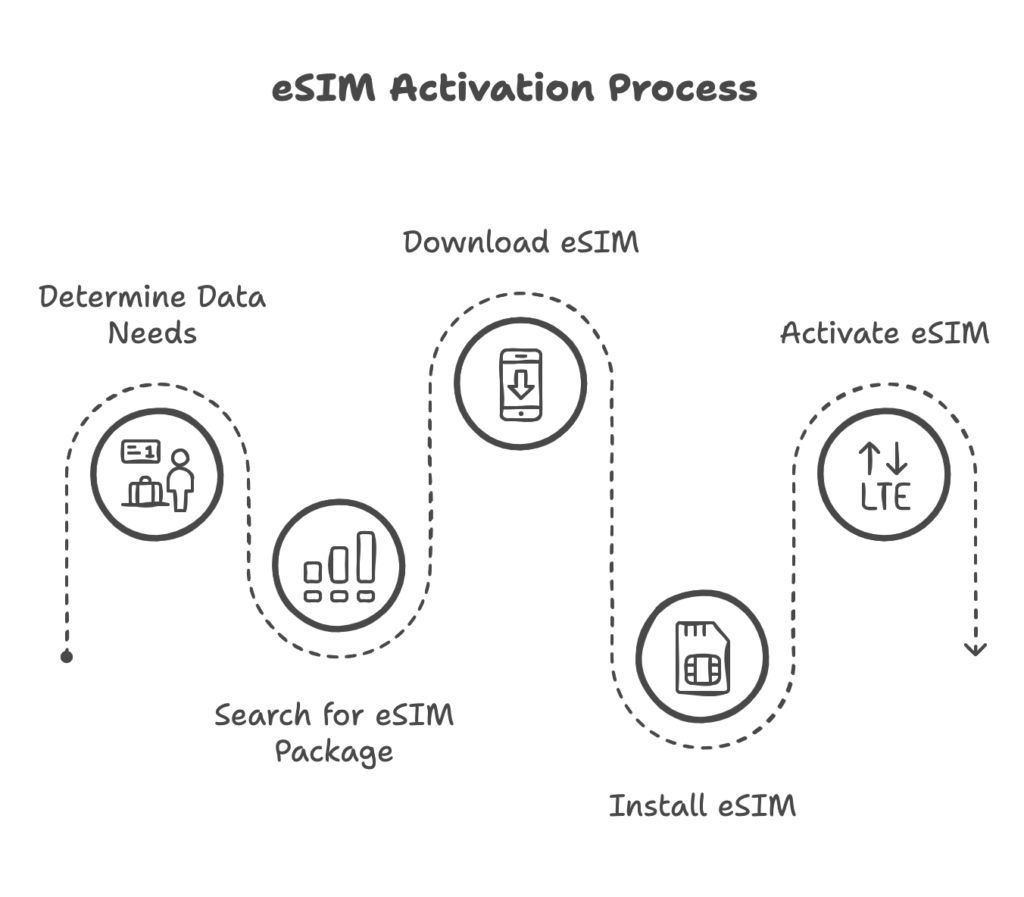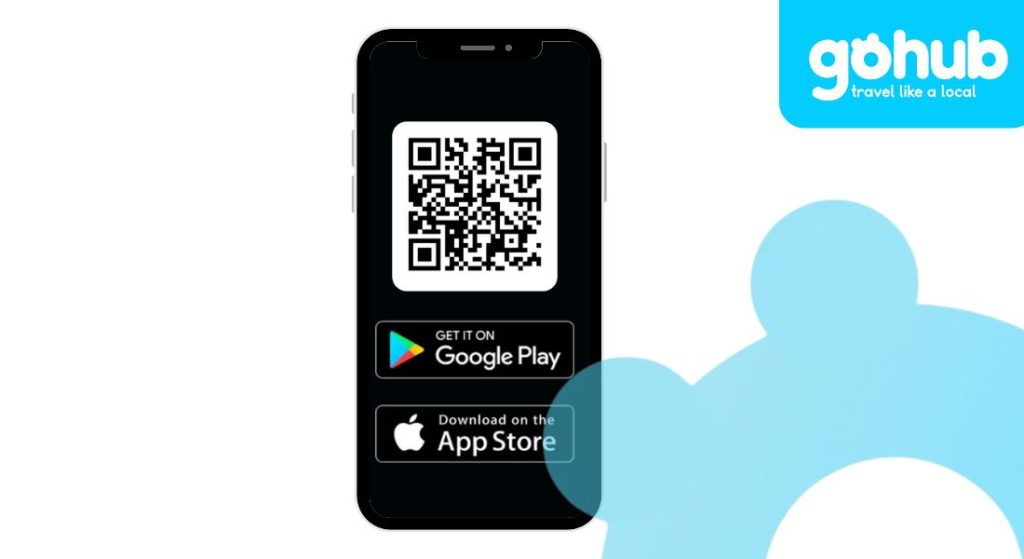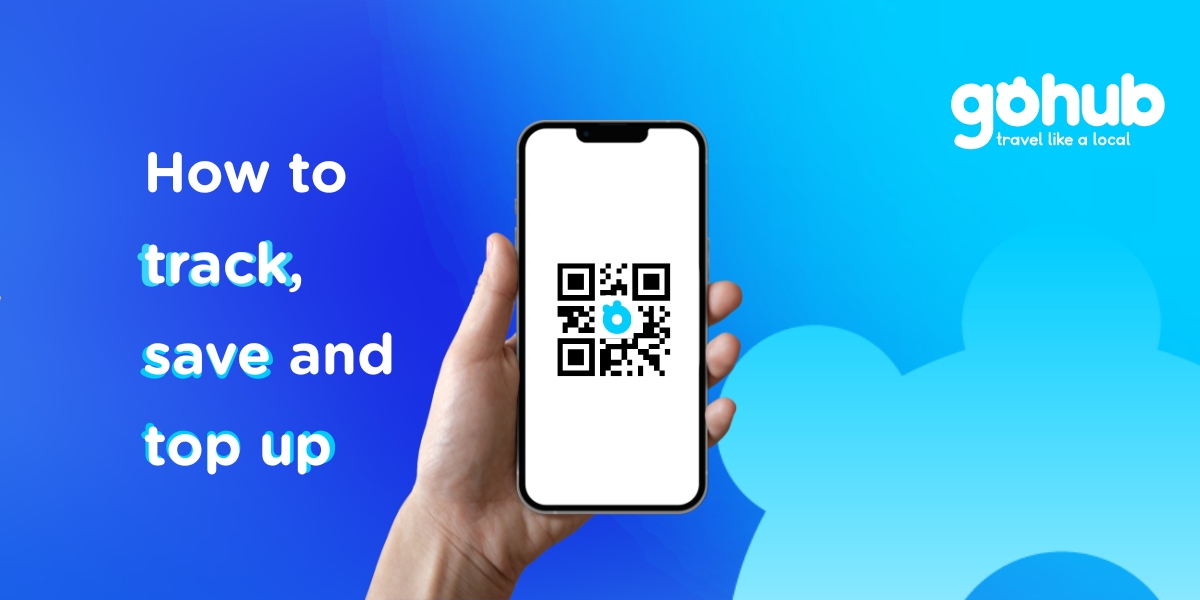Tired of running out of eSIM data mid-trip or paying ridiculous roaming fees? Whether you’re navigating foreign streets with Google Maps or catching up on work between flights, having the right eSIM data plan can make or break your travel experience.
In this guide, we’ll break down everything you need to know about eSIM data: what it is, how it works, how much you really need, and how to track or top it up while abroad. No more guesswork, no more panic-downloads at airport lounges — just smooth, reliable connectivity wherever you go.
Understanding eSIMs and Mobile Data
What is an eSIM?
An eSIM (embedded SIM) is a digital SIM card built into your device. Unlike a traditional SIM, you don’t need to insert anything. Simply download a data plan, activate it instantly, and connect to a local network—without swapping SIM cards. So, what is an eSIM? It’s a SIM with an ‘E’, meaning you can’t remove it because it’s embedded inside your phone.
💡 Key Benefits:
- ✔️ No need to visit a store or swap SIMs
- ✔️ Supports multiple plans on one device
- ✔️ Works in 100+ countries
If your phone is unlocked and ready, you can install and enable an eSIM. This is especially valuable for international travelers, backpackers and digital nomads.
What is Mobile Data?
Mobile data lets you access the internet using cellular networks (3G, 4G, 5G), instead of relying on Wi-Fi. If you’re browsing without Wi-Fi, you’re using mobile data.
📊 Quick Comparison: Wi-Fi vs. Mobile Data
| Feature | Wi-Fi | Mobile Data |
|---|---|---|
| Source | Router | Cellular Network |
| Coverage | Local | Nationwide/Global |
| Cost | Usually free | May incur charges |
| Best for | Hotels, cafés | On-the-go connectivity |

Wi-Fi vs. Mobile Data: What’s the Difference for Travelers?
Both Wi-Fi and mobile data connect you to the internet, but they differ in signal source. Wi-Fi comes from a wireless router within range, while mobile data uses a 3G, 4G, or 5G cellular connection. Mobile data’s advantage is accessibility anywhere, but it can be costly if you exceed your data plan, particularly when roaming. This makes eSIMs, especially those with flexible data plans, a cost-effective alternative.
Mobile Data vs. Wi-Fi: When to Use Each
Mobile Data: For Life on the Move
Mobile data shines when you need freedom and coverage:
- Navigation and maps while walking or driving
- Quick social media checks away from home
- Ride-sharing and food delivery services on the go
- Emergency communication anywhere with cell coverage
- Mobile banking for instant transaction alerts
- Travel assistance in unfamiliar places
Mobile data keeps you connected when moving between locations. It works in cars, trains, and outdoor spaces where Wi-Fi isn’t available.
Wi-Fi: For Speed and Heavy Usage
Wi-Fi excels when you need performance and value:
- Video streaming and conference calls
- Online gaming without lag
- Large file downloads and cloud backups
- Smart home device connections
- Multiple device usage without extra costs
- Long video calls without data limits
Wi-Fi delivers faster speeds at lower costs when you’re stationary. It’s best for data-hungry activities at home, work, hotels, or cafes.
The Bottom Line
Use mobile data when moving around. Switch to Wi-Fi when staying put. This simple approach saves money while keeping you connected everywhere.
If you’re comparing physical SIM, nano SIM, and eSIM formats, our SIM vs Nano SIM vs eSIM guide is a great resource
What Does Data Roaming Actually Mean?
Data roaming occurs when you connect to a foreign network to use your smartphone services abroad. It activates when you’re outside your home network. Roaming often results in higher charges for calls, texts, and data. Using an eSIM helps you sidestep these unexpected roaming fees.
To dive deeper into how roaming works and why it can be costly, visit our guide: What is Data Roaming?
Estimating Your Data Needs: A Traveler’s Guide
What Activities Use Mobile Data?
Essentially, anything on your phone that uses the internet consumes mobile data. This includes browsing the internet, checking emails, social media, streaming, and more. Data usage varies per activity:
- Web Browsing: ~50MB per hour
- Social Media: ~50MB per hour
- Streaming Music: ~100MB per hour
- SD Video: ~1GB per hour
- HD Video: ~4GB per hour
- 4K Video: ~7GB per hour
How Much eSIM Data Do I Need for My Trip?
Megabytes (MB) and gigabytes (GB) are used to measure data. One gigabyte is equal to about 1,000 megabytes. Usage behaviours determine data needs. For instance, 1GB lets you check emails, browse social media, and surf the web for 20-30 minutes daily for a month.
Example:
📍 Google Maps Navigation → 200 hours
📧 Checking Emails → 20,000 emails
📖 Web Browsing → 600+ webpages
🎵 Streaming Music → 10+ hours
📹 HD Video Streaming → 1-2 hours
- Google Maps: 5MB per hour
- Social Media: 50MB per hour
- Internet Browsing: 50MB per hour
- Online Gaming: 70+MB per hour
- Streaming Music: 100MB per hour
- SD Video: 1GB per hour
- HD Video: 4GB per hour
- 4K Video: 7GB per hour
Use these estimates to calculate your eSIM data needs while traveling. Do you plan on mostly navigating with Google Maps and checking emails? Or do you need to upload videos? Plan accordingly.
Not sure how much mobile data you really need? This article will help: How Much Data Do I Need?
Choosing the Right eSIM Data Plan for Your Travel Style
Once you have a general idea of how much data you need for your trip, you can choose an Gohub eSIM data plan. Gohub eSIM plans offer a range of options varying by location, data allowance (GBs), and validity period.
For example, if you’re traveling to Japan for 7 days and estimate needing 3GB of data, you’d look for an eSIM package offering 3GB for 7 days specifically for Japan. Gohub allows you to easily download, install, and activate your eSIM instantly upon arrival in Japan.

Managing Your eSIM Data on the Go
How to Track Your eSIM Data Usage Effectively
Gohub provides a specific data amount for a defined period. If you exhaust your data or the validity period ends, you can top up or buy another eSIM. Unlike traditional providers, Gohub prevents overage charges. It is still important to monitor your eSIM data to avoid unexpected surprises.
- Check your data usage settings on your smartphone.
- Consider using a data tracking app to monitor your data usage.
Top Up Your Gohub eSIM Data in a Few Simple Steps
Running low on data? If your eSIM is rechargeable, topping it up is simple via the Gohub app:
1️⃣ Log in to your Gohub account
2️⃣ Go to “My eSIMs”
3️⃣ Select your active eSIM
4️⃣ Tap “Top Up”
5️⃣ Choose a top-up package and confirm payment
If the “top up” button is unavailable, your eSIM might not be rechargeable or there might have been a network carrier change. In this case, purchase another eSIM package.
What Happens When You Turn Off Mobile Data?
Disabling mobile data necessitates Wi-Fi for internet access, which might not always be reliable or secure while traveling. It’s often better to manage your data usage than solely rely on Wi-Fi.
Tips and Tricks for Saving Data While Traveling
7 Proven Strategies to Save 90% Mobile Data Roaming Cost
Burning through data too quickly? Here are several tips to conserve data:
Beware of Background Data
Many apps use data in the background. Disable background app refresh in your phone’s settings.
- iOS: Settings > General > Background App Refresh > Off
- Android: Settings > Connections > Data usage > Mobile data usage > Select app > Turn off Allow background data usage.
Use Low Data Mode
iOS 13+ has Low Data Mode, minimizing data usage. *Settings > Cellular > Mobile Data > Select eSIM Line > Low Data Mode: ON
Use Data Saver Mode
Similar to iOS, Android’s Data Saver limits background data.
- Samsung: Settings > Connections > Data Usage > Data Saver > On
- Google: Settings > Network & Internet > Data Saver > Use Data Saver > On
Take Maps Offline
Downloading Google Maps for offline use will help you avoid using up your data plan.
*Open Google Maps with Wi-Fi > Search Destination > Download Offline Map.
Download Content
Download music, podcasts, and movies over Wi-Fi before your trip.
Monitor Your Data Usage
Check your app data usage in settings and remove data-hungry apps.
Disable Wi-Fi Assist
When Wi-Fi is weak, Wi-Fi Assist immediately switches to cellular data, which can result in unforeseen expenses.
- iOS: Settings > Background App Refresh > Off
- Android: Settings > Connections > Wi-Fi > Advanced > Switch to mobile data > Off

Still have technical questions about how eSIMs function? Our FAQ About eSIM covers the essentials.
Five Big Brands in International eSIM and Why You Should Choose Gohub
| Brand | Coverage (Countries) | Notable Features | Best For |
|---|---|---|---|
| Gohub | 100–190+ | Instant activation, affordable plans, 24/7 real human support, no hidden fees, tethering, free 1-hour replacement, up to 50% cheaper than roaming | Effortless setup, global travelers, reliable support |
| Airalo | 200+ | Affordable, loyalty program, wide coverage | Overall value, global reach |
| Saily | 190+ | Built-in VPN, ad blocker, flexible plans | Security, flexible data, fast speeds |
| Holafly | 100+ | Unlimited data, easy install, hotspot sharing | Unlimited data, heavy users |
| Ubigi | 190–200+ | Multi-device support, 5G, unrestricted hotspot | Multi-device, cross-platform users |

Why Choose Gohub?
- Convenience: Instant QR code activation ensures quick setup.
- Cost-Effective: Competitive pricing with local rates saves on roaming charges.
- Partnerships: Collaborations with platforms like Zalopay enhance accessibility and offer exclusive benefits.
- Comprehensive Services: Offers both data-only and voice/SMS-enabled eSIMs.
- Customer Support: Dedicated 24/7 support for a smooth travel experience.
Gohub is a top choice for travelers seeking reliable and affordable international connectivity, especially in Southeast Asia. Its user-friendly interface, flexible plans, and strategic partnerships make it an excellent option for those looking for hassle-free travel experiences.
Conclusion
Now you know how to track, manage, and top up eSIM data effectively! Staying connected while traveling doesn’t have to be expensive or complicated. With Gohub’s affordable and reliable eSIM solutions, you can enjoy seamless connectivity wherever your adventures take you.
🌍 Heading off soon? Whether it’s for work or play, grab a travel eSIM plan that fits your data needs — flexible, prepaid, and reloadable on the go.








